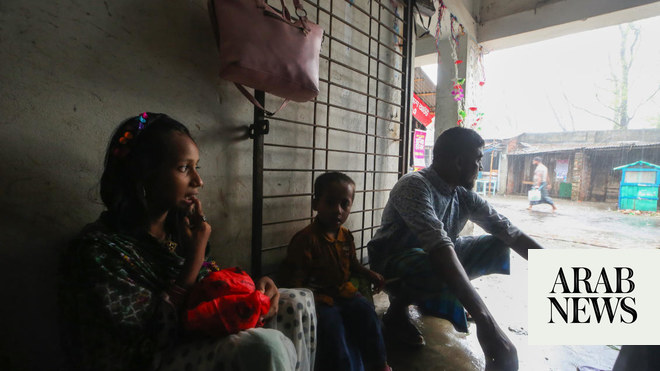
At least 25 people died as floods cut a swatch across north-eastern India and Bangladesh, leaving millions of homes underwater, authorities said on Saturday.
In India’s Assam state, at least nine people died in the floods and 2 million others saw their homes submerged in flood waters, according to the state disaster management agency.
Lightning strikes triggered by the storms had killed at least 21 people in Bangladesh since Friday afternoon, police officials said. Among them were three children aged 12 to 14 who were struck in the rural town of Nandail, local police chief Mizanur Rahman said.
Another four people were killed when landslides hit their hillside homes in the port city of Chittagong, police inspector Nurul Islam said.
Both countries have asked the military to help with the severe flooding, which could worsen because rains are expected to continue over the weekend.
The Brahmaputra – one of Asia’s largest rivers – breached its mud embankments, inundating 3,000 villages and croplands in 28 of Assam’s 33 districts.
“We expect moderate to heavy rainfall in several parts of Assam till Sunday,” said Sanjay O’Neil, an official at the meteorological station in Gauhati, Assam’s capital. “The volume of rainfall has been unprecedented.”
Several train services were cancelled in India amid incessant rains over the past five days. In southern Assam’s Haflong town, the railway station was under water and flooded rivers deposited mud and silt along the rail tracks.
India’s army has been asked to help other disaster response agencies rescue stranded people and provide food and essentials to those whose houses are submerged under flood waters.
“We are using speedboats and inflatable rafts to rescue flood-hit people,” an army official said.
In Bangladesh, districts near the Indian border have been worst affected.
Water levels in all major rivers across the country were rising, according to the flood forecasting and warning centre in Dhaka, the capital. The country has about 130 rivers.
The centre said the flood situation was likely to deteriorate in the worst-hit Sunamganj and Sylhet districts in the north-eastern region as well as in Lalmonirhat, Kurigram, Nilphamari and Rangpur districts in northern Bangladesh.
Schools have been turned into relief shelters to house entire villages inundated in a matter of hours by rivers that suddenly burst their banks.
“The whole village went under water by early Friday and we all got stranded,” said Lokman, 23, whose family lives in Companyganj village.
“After waiting whole day on the roof of our home, a neighbour rescued us with a makeshift boat. My mother said she has never seen such floods in her entire life.”
Asma Akter, another woman rescued from the rising waters, said her family had not been able to eat for two days.
“The water rose so quickly we couldn’t bring any of our things,” she said. “And how can you cook anything when everything is underwater?”
Flight operations at the Osmani international airport in Sylhet have been suspended for three days as flood waters have almost reached the runway, according to Hafiz Ahmed, the airport manager.
Last month, a pre-monsoon flash flood, triggered by a rush of water from upstream in India’s north-eastern states, hit Bangladesh’s northern and north-eastern regions, destroying crops and damaging homes and roads. The country was just starting to recover from that shock when fresh rains flooded the same areas again this week.
Bangladesh, a nation of 160 million people, is low-lying and faces threats from climate change-related natural disasters such as floods and cyclones. According to the UN’s Intergovernmental Panel on Climate Change, about 17% of people in Bangladesh would need to be relocated over the next decade or so if global warming persists at the present rate.











